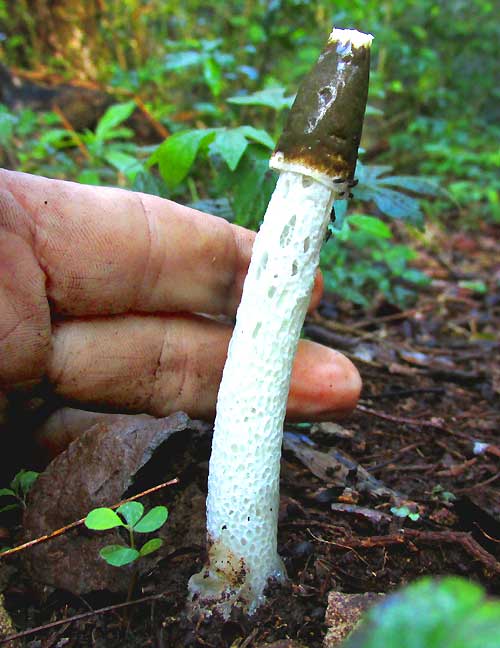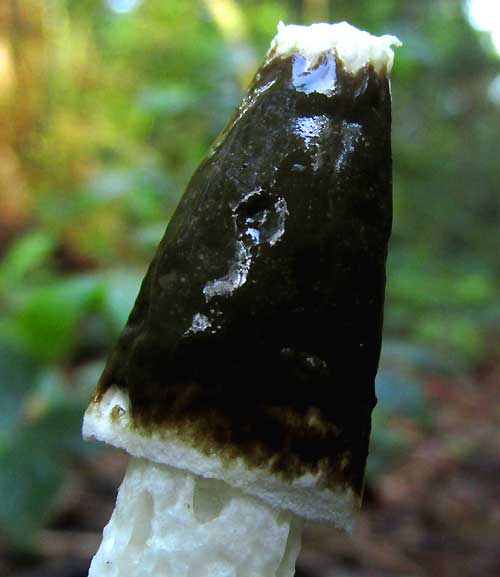Excerpts from Jim Conrad's
Naturalist Newsletter
Entry issued on November 15, 2019, from the forest just west of Tepakán; elev. ~9m (~30 ft), N21.053°, W89.052°; north-central Yucatán state, MÉXICO
STINKHORN
Along a new trail through the rancho's forest, one morning after an overnight rain, during a period when it was raining every day, the fungus shown below appeared.

It must have come up overnight because I don't think I'd have missed it the previous day. It's very similar and possibly the same as what's often called the Common Stinkhorn up north, PHALLUS IMPUDICUS. That species commonly occurs in Europe and North America, and I find it listed for Mexico and several other countries, but can't find it mentioned for the arid Yucatan Peninsula. Several species of the genus Phallus exist, so possibly this is a look-alike species. Fungi haven't been much studied in the Yucatan.
The stinkhorn's cap is covered with a brown, sticky goo, called gleba, smelling a bit like carrion. Small insects land on it, the goo contains reproductive spores, and when the insects fly off, spores go with them in the goo stuck to the insects' feet. A close-up of the cap is shown below:

Note that the depression in the cap's center is hexagonal. The brown gleba disappears on more mature mushrooms, leaving a honeycomb-like surface. Most pictures I find on the Internet show the species with the honeycombed cap. I read that when the mushroom is coming up, though it looks fairly fragile, it can exert enough upward-pushing force to break through asphalt.
Ecologically, the species is associated with rotting wood. It may also form mycorrhizal associations with certain trees. Though stinkhorns aren't toxic, hardly anyone tries to eat them, though immature bodies without the goo sometimes are eaten.